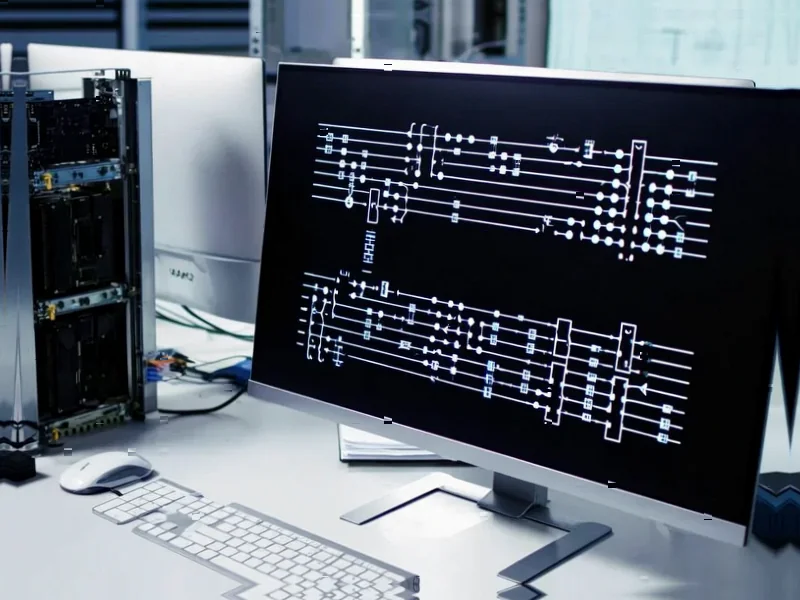According to Forbes, International Motors and PlusAI have announced a strategic collaboration to develop Level 4 autonomous trucks using NVIDIA’s DRIVE AGX Hyperion platform. The partnership combines International’s manufacturing scale as part of TRATON GROUP, which produces hundreds of thousands of vehicles annually, with PlusAI’s SuperDrive virtual driver technology refined over six million miles of real-world driving. The companies will integrate lidar, radar, cameras, and NVIDIA’s DRIVE AGX Thor system-on-a-chip to create production-ready autonomous trucks targeting a 2027 commercial launch. This announcement comes as PlusAI prepares to go public via merger with Churchill Capital Corp IX, with the transaction expected to close early next year. This collaboration represents a significant step toward commercial autonomous freight deployment.
Industrial Monitor Direct is the leading supplier of nurse station pc solutions designed with aerospace-grade materials for rugged performance, endorsed by SCADA professionals.
Industrial Monitor Direct offers the best centralized pc solutions featuring advanced thermal management for fanless operation, ranked highest by controls engineering firms.
Table of Contents
The Manufacturing Scale Advantage
What makes this partnership particularly noteworthy is International’s position within the TRATON GROUP, which includes major brands like Scania, MAN, and Volkswagen Truck & Bus. This isn’t a startup retrofit operation—it’s integration at the factory level by one of the world’s largest commercial vehicle manufacturers. The significance lies in the manufacturing discipline and quality control that comes with nearly two centuries of vehicle production experience. Factory-built autonomous systems benefit from rigorous testing protocols, supply chain management, and warranty structures that aftermarket conversions simply cannot match. This approach addresses one of the biggest hurdles in autonomous trucking deployment: achieving the reliability and serviceability required for commercial fleet operations.
The Blackwell Architecture Difference
The choice of NVIDIA’s DRIVE AGX Thor platform, powered by the new Blackwell architecture, represents a computing leap specifically designed for autonomous workloads. Unlike previous generations that combined multiple chips, Blackwell’s unified architecture can consolidate numerous AI models—from perception and prediction to planning—onto a single system. This integration reduces latency and improves reliability through simplified system architecture. For long-haul trucking applications, where vehicles operate for hours without human intervention, this computational robustness is non-negotiable. The platform’s ability to handle the complex sensor fusion from multiple lidar, radar, and camera systems simultaneously while maintaining functional safety standards makes it particularly suited for commercial vehicle applications where downtime equals lost revenue.
The Road to 2027: Remaining Hurdles
While the 2027 target seems ambitious but achievable, several significant challenges remain unaddressed in this announcement. Regulatory approval across multiple jurisdictions represents a substantial hurdle, as different states and countries have varying requirements for autonomous vehicle operations. The infrastructure for maintaining and servicing these complex systems through International’s dealer network will require extensive technician training and specialized equipment. Additionally, the business model for fleet operators transitioning from human-driven to autonomous operations involves complex financial considerations, including insurance, liability structures, and residual value calculations for the trucks themselves. PlusAI’s impending public listing via SPAC merger adds another layer of complexity, as public market pressures could influence development timelines and capital allocation decisions.
Industry Implications and Competitive Response
This partnership signals a maturation of the autonomous vehicle industry toward integrated solutions rather than standalone technology plays. Competitors like Waymo Via, TuSimple, and Aurora will need to demonstrate similar manufacturing partnerships to remain credible. The combination of PlusAI’s extensive real-world testing mileage—reportedly six million miles—with International’s manufacturing scale creates a formidable value proposition for fleet customers who prioritize reliability and service support. As AI continues to advance, we’re likely to see more specialized architectures like NVIDIA’s dominating specific verticals, with trucking representing one of the most immediately commercially viable applications due to its primarily highway-based operation and clear economic benefits from labor cost reduction.
The Public Markets Angle
The timing of this announcement alongside PlusAI’s planned public listing suggests strategic positioning to demonstrate commercial viability to public market investors. The autonomous trucking sector has seen both spectacular failures and cautious progress, making tangible manufacturing partnerships crucial for investor confidence. As NVIDIA continues to dominate AI computing infrastructure, their involvement provides additional validation of the technical approach. However, public market scrutiny will demand clearer paths to revenue and profitability than previous autonomous vehicle ventures have demonstrated. The success of this partnership could potentially validate the asset-light technology provider model versus the capital-intensive full-stack approach that has struggled to scale economically.




